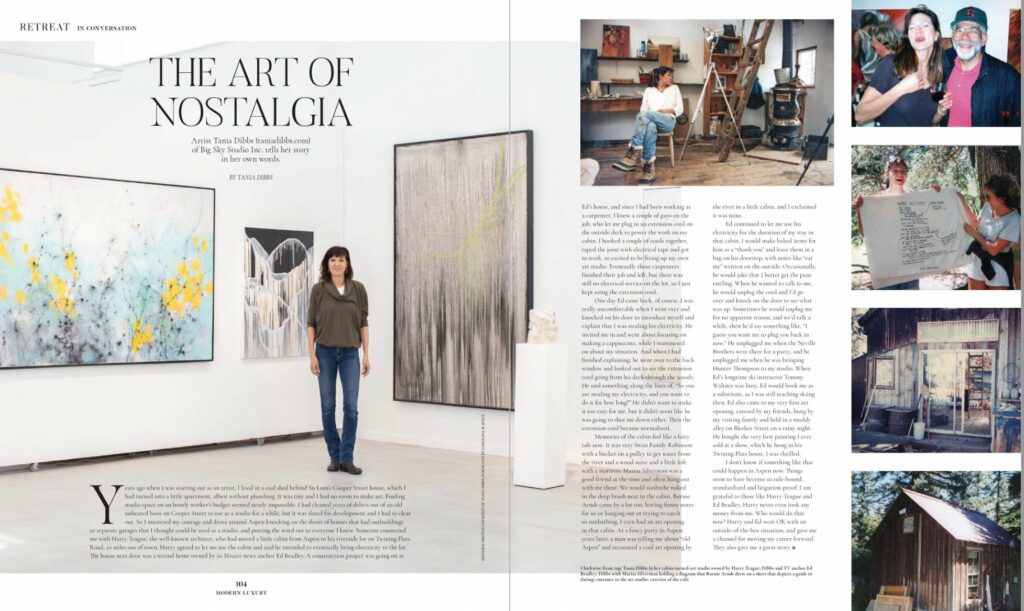July 13, 2022 | ORIGINALLY PUBLISHED IN ASPEN MAGAZINE & ARTS MANAGEMENT MAGAZINE

Artist Tania Dibbs of Big Sky Studio Inc. tells her story in her own words.
Years ago when I was starting out as an artist, I lived in a coal shed behind Su Lum’s Cooper Street house, which I had turned into a little apartment, albeit without plumbing. It was tiny and I had no room to make art. Finding studio space on an hourly worker’s budget seemed nearly impossible. I had cleaned years of debris out of an old unheated barn on Cooper Street to use as a studio for a while, but it was slated for development and I had to clear out.